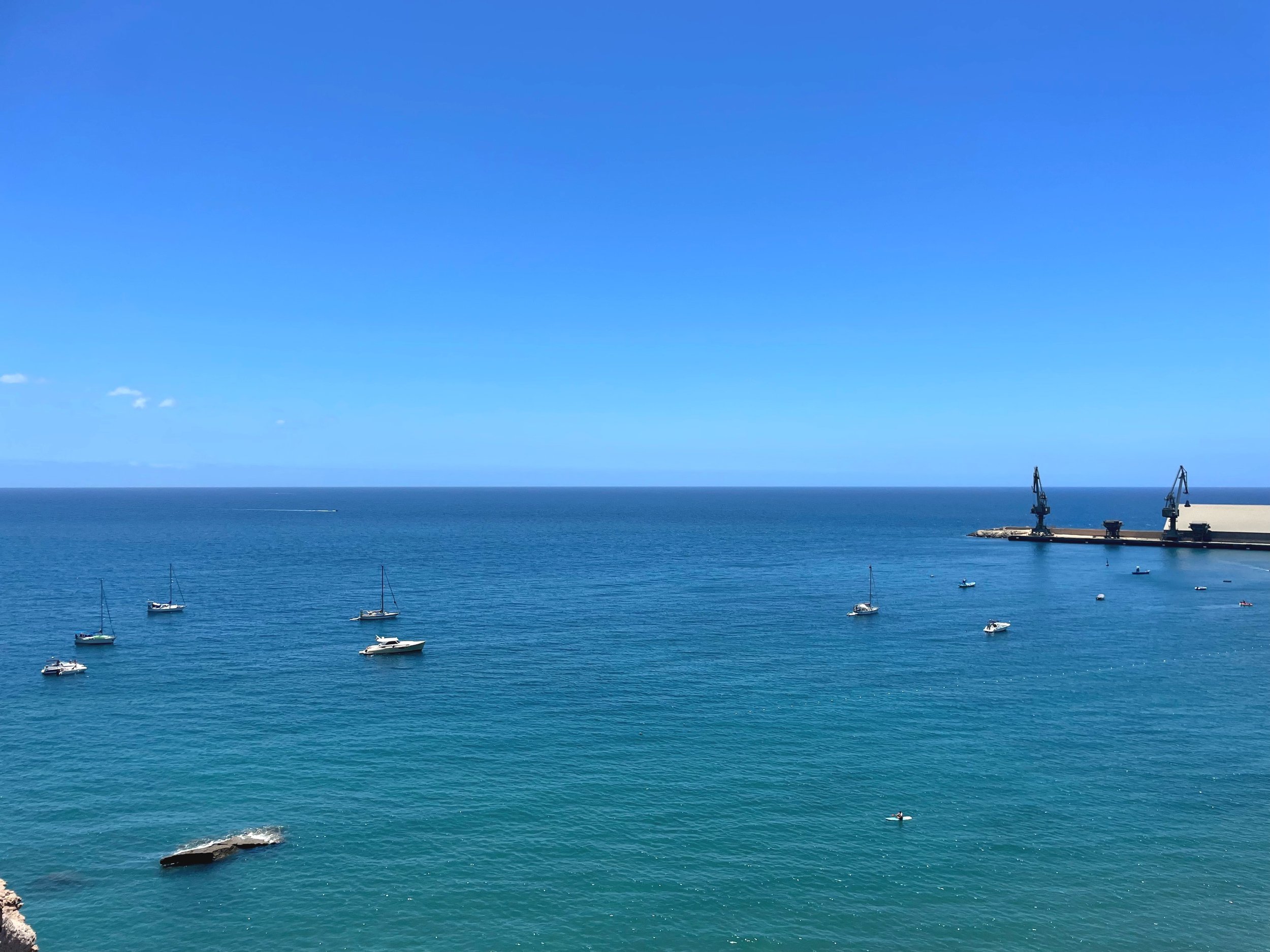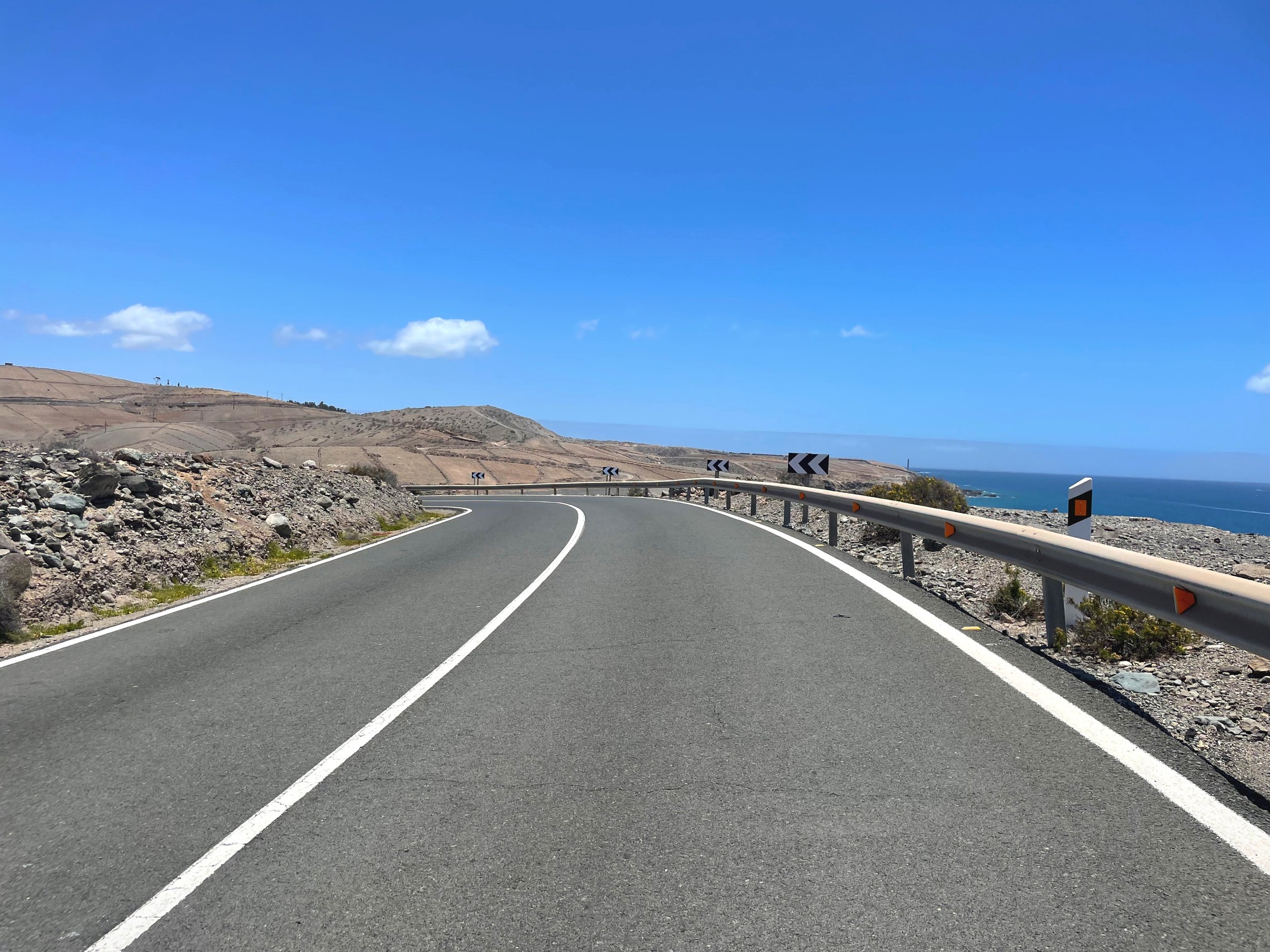Gran Canaria Mogán to Las Filipinas
I'm amazed by how such a small place packs a ton of 1-hit wonders in the cycling world. Gran Canaria is home to one of the longest climbs in noncontiguous Europe and uniquely diverse micro-climates.
My trip to the Canary Islands was pretty spontaneous and on the go. Locals and friends highly recommended me to ride in the south since that's where the "good" weather was. Albeit, I'm fond of cloudy and drizzly weather since I've had my fill of the sun back in Kuwait.
From what I heard from locals and saw from the Pico De Las Nieves was that the north side of Gran Canaria was greener and wetter, most of the time due to the wind effect I alluded to in previous Gran Canaria articles (I highly recommend you read those!). So it seemed like a natural decision to leave the south and go north for the remaining days I had on the island. However, I had time to get in one last ride in the south before venturing north.
So I did just that.
I had told Maxi what I had in mind, and even though he believed the south was the better side, he understood my eagerness to explore the north. He encouraged me to ride with a local group the morning of my departure day. I happily agreed to that, as I wouldn't pass on an opportunity to ride with local cyclists and experience their island their way.
I met up with Izz, a local legend, Ane, and about 5 other cyclists. Part of the group was headed to Taurito and back, riding along the coastline, while the rest were headed to the dreadful VOTT (Valley Of The Tears). I highly recommend you look this up; it's mad cray.
Although the scenery was tear-inducing (out of beauty), I didn't necessarily feel like riding the Valley Of The Tears, knowing I had a time limit. So I decided to ride along to Mogán (Not to be confused with the port town of Mogán), A small mountainous village perched on the edge of one of many calderas around the island.
There was a big catch with riding to Mogán. A few years back, a massive landslide destroyed part of the coastal road, making it "almost" impossible to reach Puerto De Mogán by bike. Its reasons like these when riding with a local group pays off.
You see, I'm a major poacher (ride everywhere I'm supposed to and not supposed to be riding). However, I'm not in Portland, where I know the nooks and crannies like the back of my hands; I needed guidance, and Izz came in clutch.
After riding along the coastal road with the entire group and reaching Taurito, we said goodbyes and parted ways. **The miles following that have been edited out for the sake of non-transparency**.
We magically made our way to the bottom of the road that takes you to the mountainous town of Mogán. Climbing up the road, I heard a bit of everyone's story about living on the island and riding in one of the best places for cyclists worldwide. It truly inspired me to consider that lifestyle (although far-fetched for me).
We reached Mogán shortly after that, and I stopped at a small cafe to get breakfast while the guys continued as they had a long day ahead.
In Mogán, I had two options to make it back to Maspalomas. The first was to go back the same way we came. The second is to climb up the GC-605 towards a series of switchbacks climbing up the head of the caldera and dropping down to Las Filipinas.
I opted for the latter for obvious reasons!
I was still sore from riding up to the Pico De Las Nieves the day before. So I had to keep a good pace to make it back to Maspalomas in time. Although I felt like I needed extra gear, legs, and a pair of lungs, the scenery and nature helped take my mind out of the pain cave.
Something about the nature of Gran Canaria just screams, "I bet there are dinosaurs around here" what can I say? My mind wanders around on rides.
The exposed layers of lava flows, ancient Canary Pine, and plentiful gorges around inspire you to get lost in your imagination. And with that, I found myself at the junction of the back road I took. However, before I continued on the route, I took one last peek at the set of switchbacks I just had climbed.
The GC-605 links Mogán to Ayacata, a small village near the crown of the Pico, however, I didn't ride the entire length of the GC-605. Instead took a back road that connected me to the caldera east of the Mogán. Although the conditions on the back road weren't as good, the views were impressive.
As soon as I turned around the giant hill separating the two calderas, I felt a strong Atlantic breeze funneling up the gorge, bringing cooler temperatures with it. The sound of wind resembles the sound of the waves crashing on the beach in a continuous rhythm.
I stood at the edge of the caldera and took a few minutes to acknowledge what was in front of me. I couldn't help but think about how crazy it seemed that I was standing on the edge of a giant volcano in the Atlantic.
The descent down to Las Filipina was fast, edgy, and adrenaline-inducing. Sharp hairpins, expansive vistas, and ocean breeze culminate into a one-of-a-kind experience worth the climbing toll.
Reaching the coast, I continued eastwards back to Maspalomas to pack up and relocate north to the main city of Las Palmas, which was a 35 min drive around the island.
It was great experiencing the south of Gran Canaria and getting to know many incredible people, such as Izz, Maxi, and Ane. However, I missed the rainy weather and had to experience the cooler temperatures of the north.
Leaving the sunny southern side behind, I found what I had longed for. As soon as I reached Las Palmas, it started to drizzle, and the air was crisp and chilly on the skin. I got flashbacks of the beautiful cool temperatures of the PNW. An experience that made me feel right at home, even though I was serval thousand miles away in the middle of the Atlantic ocean.















